Short answer
The lamp closest to the terminal that is switched closed will light up first. If both terminals are switched closed simultaneously, and the circuit is initially charged in the middle of the power and ground potentials, the lamps on the ends of the strings will light up first. It is impossible for a lamp in the middle to light up first. Read on for an explanation as to why.
Problem statement
Say we have two lamps connected in series to a voltage source. The distance from the lamps to each other and to the voltage source is so great that the delay required for the propagation of charge is noticeable.
Let's suppose we have a detector at each lamp with infinite time precision and infinite luminance precision. Also, lets assume the luminance of each bulb is directly proportional to the voltage across its terminals, so even if there is a minuscule voltage, there will be a minuscule light generated. This test setup will tell us which bulb lights first.
It is helpful to throw away the concept that wires and components behave in an ideal way. We will model the wires as transmission lines. In this case, there will be a voltage wave starting from the last terminal connected. Let's look at each case. Relative voltages are represented with + and -. So from high voltage to low voltage the order is +++, ++, +, -, --, ---.
Case 1: ground connected initially
In this case, the circuit nodes are charged to ground voltage initially.

simulate this circuit – Schematic created using CircuitLab
When the power supply is connected, a voltage wave starts from the power supply terminal as electrons are sinked by the power supply. LAMP1 is the first to have a voltage difference across it, so it will light up first.

simulate this circuit
Once the voltage wave has reached the ground terminal, a portion of it may reflect back and travel the opposite direction (see ringing). Assuming the absolute value of the reflection coefficient is less than 1, the wave will eventually disappear after an infinite time, and the circuit will stabilize to a constant voltage at each node of the circuit. In practice, the wave should decay to have a negligible effect nearly instantaneously.

simulate this circuit
Case 2: power connected initially
In this case, the circuit nodes are charged to power supply voltage initially.

simulate this circuit
When ground is connected, a voltage wave starts from the ground terminal as electrons are sourced from ground. LAMP2 is the first to have a voltage difference across it, so it will light up first.

simulate this circuit
Once the voltage wave has reached the power supply terminal, again, a portion of it may reflect back and travel the opposite direction before the circuit stabilizes to constant voltages at each node.

simulate this circuit
Case 3: both terminals connected simultaneously
Actually, this case depends on the initial voltage of the circuit. If it is in between the power supply voltage and ground, a voltage wave from the power supply will pull (sink) electrons out of the circuit, while a voltage wave from ground will push (source) electrons into the circuit. In summary, its a combination of the two previous cases, with two waves travelling in opposite directions.
Which lamp turns on first?
From the intuition from the diagrams, we know that the bulb closest to the switch will light first. The lights might switch from off to on just once, or they may flicker on and off as the voltage waves reflect back and forth across the circuit. They may switch gradually, or very abruptly. The behavior depends on the impedance of the overall circuit. This will determine the sharpness of the voltage waves (gradual vs. abrupt switching) as well as the number and intensity of the reflections (flickering).
You could get into Maxwell's equations and transmission line theory and figuring out exactly which light would turn on at which femptosecond and get super pedantic about it. But why spend years to answer this question, when you can just get the intuition in a few minutes? All you need to know is that voltage, as an electrical potential difference, travels in a wave! That's all you need to know!





